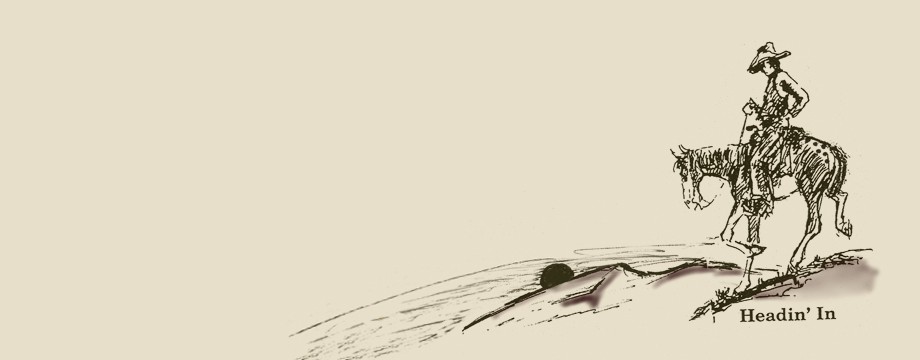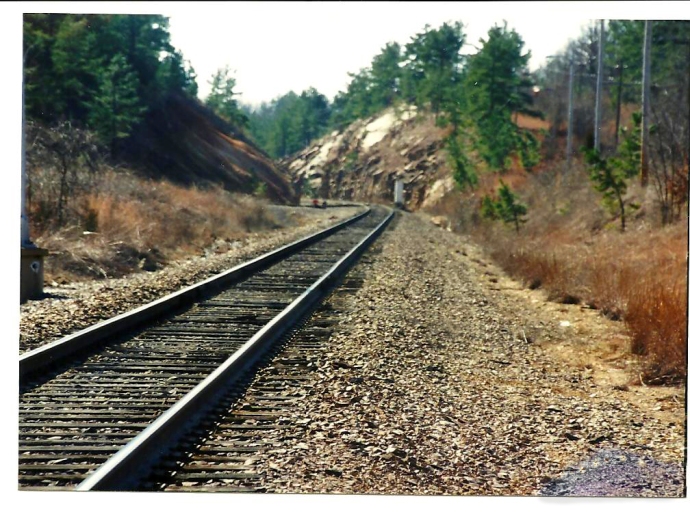They came out of nowhere, five men on horseback, their pistols at the ready. The drivers of the stagecoach and the two accompanying freight wagons were not of a mind to resist.
The date was January 15, 1874. The stagecoach passengers had departed the train at Malvern, Arkansas and boarded the coach for a twenty-five mile ride to Hot Springs. Mainly they were affluent people intending to spend a winter vacation enjoying the hot mineral water bathes and luxurious accommodations the town was famous for. They were rowed up beside the coach and systematically relieved of their money, watches, and jewelry by the polite but demanding highwaymen. The James-Younger gang took a little over two thousand dollars from that robbery. They were Jesse and Frank James, Arthur McCoy and two others. Later it was determined that the unidentified men were probably James and John Younger.
The gang disappeared and efforts to find them turned up no clues. We now know they headed north. Twelve days later they showed up at Chalk Bluff, Arkansas near the Arkansas/Missouri border. They probably had holed up in nearby Greene County. The former Confederate guerillas would have found many friends in Greene County. At Chalk Bluff they had the local blacksmith re-shoe their horses. He wisely asked no questions. They paid him for his services and went on their way.
Back in July the gang robbed a train in Iowa, but their money was running low and somewhere along the way they devised a plan to rob a train in Missouri. This was to be their first train robbery in Missouri. They determined Gads Hill would be a good location to hit. The village consisted of few houses, a store, a railroad loading platform, and siding switch. Trains were sometimes switched off to pick up loads of logs or lumber or passengers. Gads Hill was about ten miles north of Piedmont. While the robbed train was going south to Piedmont to report the hold up, the robbers would travel north lengthening the distance between them and any pursuers. Then they would turn northwest into some of the roughest terrain in Missouri.
They followed a route from Arkansas into Missouri that many a Confederate raiding party had used a scant decade before. Much of the area was yet swampland. They entered Missouri near Chalk Bluff and traveled the high ground between the Black River and the St. Francis River.
They probably tarried just long enough to find two more local men to obtain the train schedules and act as guides and lookouts. The area and the people had been savaged terribly by Federal troops. To the west of the Current River a former Federal militia officer, the nefarious Colonel Billy Monks, still held control over Howell and adjoining counties, forcing former Confederate sympathizers to leave or face destruction and death by night riders. To the east in Stoddard County, night riders were active also. Along Crowleys Ridge several murders had occurred. In short the war, for some, had not ended in 1865. In 1874 the local newspaper often had whole pages of abandoned or repossessed property listed for Sheriff’s sale. It would not be difficult for the gang to find a couple of helpers.
About three o’clock in the afternoon on January 31st, 1874, seven masked well-armed men rode into the village of Gads Hill. The store owner was robbed and the rest of the village inhabitants were rounded up. Some accounts say they were placed in the store. Some say they were kept around a large bonfire. Others say a small station house was used to detain them. This writer believes that it is more likely they were held under guard in the store. A bonfire would attract unwanted attention and a crowded station house would have looked suspicious.
The James-Younger gang was well aware that the railroad owners and the bankers had hired the Pinkerton Detective Agency to capture the gang and put a stop to the robberies. Pinkerton was becoming increasingly frustrated and was said to be riding some trains himself. They fully expected to find a Pinkerton man on this train.
The siding switch was opened and a red flag readied to warn the train to stop or face derailment on the siding. At about four-thirty in the afternoon the southbound St. Louis to Little Rock passenger train braked to a stop even though the man waving the red flag wore a mask. The conductor stepped off the train and was promptly relieved of his money and valuables. Four other outlaws appeared and boarded the train. They announced that they were there to rob the rich and would not take money from working men and the ladies. They checked the hands of the men for calluses and those with soft hands were promptly robbed. Those with fancy clothes and hats were given special attention. When one lady was found to have four hundred dollars in her purse they reneged on their promise to rob men only and took her money. They asked the male passengers their names and place of residence, checking them closely. They were looking for a Pinkerton detective. In the express car they broke open the safe with a sledge hammer and proceeded to take anything of value from it. The gang collected at least two thousand dollars. Some sources put the amount taken at five thousand.
Satisfied they had found all the money they could, the robbers called in their lookout, and released the train to go on to Piedmont. They stole three more horses from the residents to use as spare mounts. The seven robbers then mounted their horses and rode west into the night. Once out of sight the two mystery men rode in a different direction and faded into the landscape. The remaining five turned right and proceeded to the West Fork of the Black River, carefully concealing their trail. It was reported later that five mysterious riders were spotted near Lesterville about daylight the next morning.
- This pre-1900 railroad map of the Iron Mountain & Southern RR shows the Gads Hill location (left side of the large R). The James/Younger gang passed through Chalk Bluff Arkansas located at the extreme upper right corner of Arkansas (not on modern maps). The most logical route north for them would have been on dry land between the Black River on the left and the St. Francis River on the right. The 1870 census indicates my great, great grandparents were living near Altha, Stoddard County. This is the only map that I have found that shows Altha.
A large posse left Piedmont the next morning after the robbery and picked up tracks near Lesterville. A light snow had fallen that night and aided the pursuers’ efforts. One of three horses stolen at Gads Hill was found and identified. It was in jaded condition.
In the breaks of the upper Current River the gang found a farm that offered food and an overnight rest stop which they paid for. The next morning they stole a fresh horse from their host and were on their way. The next report of strange riders came from near Phillipsburg. Then as time went on, suspicious looking men were seen at Boliver on the west side of the state. The Piedmont posse had stopped for rest at Licking and then gave up the chase. One gets the idea they may not have been too eager to have caught up with the desperadoes. Each of the five robbers openly carried four pistols and in addition several carried shotguns as well. A rifle and ammunition had been taken from the Gads Hill store. The posse gave it a good try. Perhaps after the first adrenalin rush some may have began to wonder just how much they owed the railroad magnates.
In those days it was customary for travelers to stop at farms for meals and lodging. They paid for the services much as we do at bed and breakfast accommodations today. The extra money was welcomed as well as a chance to catch up on current events. When the James-Younger gang took a horse it was almost always reported as stolen.
Before we leave the subject of the stolen horses, let us stop and think a moment. While the fields were plowed and worked by mules or oxen, a horse was a valuable transportation and light draft animal as well as essential in producing mules. The James-Younger gang was certainly foolish to take up a life of crime. They were not fools when it came to the value of the animals. Most likely they paid for the horses they “stole”. The farmer may not have been given a chance to say no but a generous payment bought his cooperation, as well as a poor memory and dim recollection of the direction taken by the unknown strangers. Jesse and Frank James eventually made it back to their home area around Kearney, Missouri. James and John Younger were in St Clair County by March. We will discuss brothers James and John in a later blog.
I was privileged to live for twelve years in southeast Missouri. I worked for Black River Electric Cooperative headquartered in Fredericktown with branch offices at Ellington and Marble Hill. My work took me by Gads Hill many times. I was already aware of the 1874 train robbery before I moved to the area, so I took note of Gads Hill when I passed by. There was not much there. A bar (closed I think) and a farmhouse or two down the road. I remember a huge aggregate pile and rock crusher. The railroad had been cut deeper into the south slope of the mountain than it probably was in 1874. Highway 49 took us southward down into the beautiful Piedmont Valley and to Clearwater Lake.
My great, great grandparents lived in Stoddard County during the 1870’s, a fact that was unknown to me at the time I lived in southeast Missouri. I became aware of that only in recent years. In my quest for more information I searched county newspaper files and legal records for information on my ancestors. I learned a great deal about Stoddard County at the state archives in Jefferson City. Much violence went on there during and after the war of the rebellion. The newspapers seldom reported it, choosing to report the violence and turmoil in other states. In fact the newspaper in Stoddard County extolled the virtues of the county continuously. They were trying hard to leave the sorrows of war behind. And they do have one of the best farming communities and best places to live in the country. I visited the county a few years ago searching for my roots. While there I met nice and helpful people.
My Irish immigrant great, great, grandfather Michael Ryan was set upon, robbed and murdered by highwaymen on the evening of November 19, 1874. The attack occurred near the southwest corner of the current city of Dexter, probably near the location of the golf course. An inquest was held and the murderer was identified. He was never brought to justice. I have yet to find my ancestors grave. My reason for being in America is there, somewhere in Stoddard County.
—Best wishes for the new year.







Walt – I remember well working with you when you were the BREC Power use advisor. My daughter sent me a link to this blog. Great story and good to know you’re still kicking.
Merry Christmas Paul. I remember you also. I enjoyed my time working at Black River Electric and the friendly people of Southeast Missouri. Thanks for checking in and best wishes from the Sundown Trail, Walt Ryan
Thanks for sharing the information contained in the website.
Rick, thanks for your comment.
The story told in my family is that one of the horses taken belong to my great grandfather. He rode into Gads Hill during the robbery, and was asked to dismount. They then took his saddle off, and rode away with his horse.
This story was told and pasted down thru the Casey family.
Betty, thanks for your comments and the information. Small bits of information such yours are important to the story. Make sure the information is recorded for future generations.
I’ve read about them passing through Bolivar in the middle of the night, a highly unusual event bound to attrack attention. May have been on their way to Roscoe/Monegaw Springs area, northwest, for food & shelter.
My grandfather was just born about 35 miles away in Lowndes when the robbery occurred. The swamp was likely part of the Mingo Swamp near my farm which I was able to buy from my other grandfather, and was farmed for a long time by my uncle.
It was interesting to see how many greats you have, vs. my grandfather.
This was mentioned by a posting on the Historical Wayne County FB site, just today. You might want to follow it, as there is a lot of area info. I shared this on their post as you have a lot of great information.
Pingback: Wayne County, Missouri, Gads Hill, Missouri, Train Robbery, James-Younger Gang – Orley and Eva (Davis) Atnip
I worked in the mid 90’s building the gravel plant in Gads Hill, I read a lot of stuff about the area but this is good stuff in your story. The bar was open then. They were changing the gravel plant over to making gravel for shingles when I was there, I think before that it was just a quarry mainly for the railroad.
Teddye: Looks like we have traveled over the same countryside. Thanks for checking in, and bringing me up to date on Gads Hill. Best wishes from the Sundown Trail . Walt Ryan
The pic’s bring back memories. I worked as a locomotive engineer for the Mo PAC RR from 1968 to 2005. Spent many an hour hauling Rock out of Gads Hill south to Poplar Bluff and north to St. Louis. I enjoyed the work and the men I worked with and for when it was MoPac but when UP took over the management went to hell in a hand bag and that’s when I retired as soon as I could.
My grandmother was born at Gads Hill,mo.1921…my mother’s people were enlisted in CSA,…Wayne County, mo.
I was glad to see a pieace on gadshill, I currently live at bluff view previously chalk point, not far from the river and not far from gadshill robbery.
I grew up in Piedmont, spending much time with my grandparents during the early 1950s. At the time of the train robbery and up until sometime around 1954 – 1955, there was a tunnel through the mountain at Gads Hill. I think it was in the area of your photo looking south. I can remember one summer night when sirens sounded in Piedmont, and telephones and the gossip stations on everyone’s front porches were abuzz. The tunnel had collapsed on one of the Sunshine Specials; these were three trains running from St. Louis to Little Rock, Arkansas, to Dallas, Texas, late in the evening, each arriving in Piedmont somewhere around 8:30 – 10:00 p.m. about 30 minutes apart. I was 9 or 10 at the time. I remember Grandma letting me stay up to watch for the train (Grandma lived a block from the Piedmont passenger depot, and we could stand outside one of the kitchen doors and see the depot clearly). I also remember everyone saying that the dome car ( a special car which had a raised area accessible by a few steps which was almost totally all windows , giving a wide view of the area) had been crushed with several people injured there. I need to research this incident for more factual information.
Thanks for the information. That is the first I have heard of a tunnel. I will do some more research as I have the time. Best wishes from the Sundown Trail.
This is really neat i love reading about missouri history
This is really neat i love reading about missouri history
My GGreat Uncle Tom Buffington was on the train. The story I was told by my Grandfather John M Buffington as related to him by his Uncle Tom was about the same concerning Jesse and Gang only robbing those with smooth hands.
Great information. Thanks and best wishes from the Sundown Trail.
What Information do you have regarding the Reno brothers as to their participations as members of the James Gang?
I can’t recall seeing any thing about the Reno boys riding with the James boys. The Reno’s operated mostly in Indiana and Iowa. They were into crime years before the War Of The Rebellion started, and also during the war. They were ruthless, and I think they make the James Boys look like Choir Boys. John Reno did venture into Missouri. He robbed the Davis County court house (in north central Missouri). He was caught tried and sentenced. I believe it was 28 years. Not sure. I am going from memory. Thanks for your interest, and best wishes from the Sundown Trail.